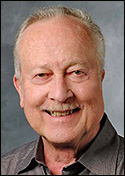As companies begin to roll out RFID systems on a large scale, they will inevitably face the need to translate raw RFID event data into meaningful information that can be processed by enterprise applications. The Software Action Group set up by EPCglobal, the nonprofit organization established to commercialize EPC technology, is defining standard interfaces for sharing data among enterprise applications. But there has been little discussion of exactly what tools and techniques will enable companies to transform EPC data into information that can be acted upon.
Complex Event Processing (CEP) is a relatively new way of solving exactly this kind of problem. CEP is a method of aggregating large amounts of information in a database that uses Event Query Language (EQL) to sift through the data for meaningful information. Unlike SQL, a common database language that uses data attributes such as size, product type or company name to examine the relationships between entries in the database, EQL uses events, time, causality and event abstraction as its fundamental elements.
CEP was developed to solve problems that involve large numbers of real-time events. It’s used, for example, in many areas of financial services, including fraud detection among millions of credit card transactions, online banking to track global electronic transactions between banks, and stock trading to monitor conformance with Security and Exchange Commission regulations.
Here’s a figurative example of how CEP works. It gathers many simple events—church bells ringing, the appearance of a man in a tuxedo and a girl in a flowing white gown, people throwing rice—and infers a complex event is occurring: someone is getting married. So the job of CEP is to take simple event-oriented data, apply sets of event processing rules to those events in real time, and, through that processing, determine which complex events companies need to act on. In other words, CEP separates the wheat from the chaff.
This is exactly the challenge facing companies deploying RFID systems. It’s not enough to use RFID as a “radio bar code.” The savings from eliminating hand scanning of bar codes won’t pay for an enterprise-wide RFID system. Companies need to find ways to gather information they could not get with bar codes and analyze it in ways that make their businesses more efficient. CEP might be used to detect theft in a warehouse by gleaning unusual movements of products from the billions of RFID reads that will occur daily. Or it might detect a delayed shipment, because tags were scanned when they left a manufacturing facility but a day later failed to be scanned at a cross-docking facility.
According to Roy Schulte, a vice president and research fellow at Gartner, CEP will become a common computing model within five to ten years. But developers can build CEP systems today using common computer languages, such as Java or C++. EQL techniques help simplify the job of writing event-driven applications.
Another benefit of CEP is the use of dynamic architectures that are uniquely designed to process multiple event streams in parallel and in real time. Typically, these architectures, called event processing networks (EPNs), are networks of event processing agents that communicate with one another. EPNs can capture multiple streams of event data, aggregate them and query the data at the same time. As event volume and velocity grow, these EPN architectures will be critical to building RFID systems that can be expanded to handle massive amounts of data from thousands or even tens of thousands of readers.
So keep an eye out for CEP as it grows in stature in the software industry. As more companies move from a simple “slap and ship” RFID deployment strategy, CEP will continue to rise in importance. As adopters of RFID begin to see the need to integrate RFID tracking with inventory control processes and other business processes in real time, to improve those processes, CEP will be the technology needed to achieve that integration and deliver real business value.
David Luckham is professor emeritus of electrical engineering at Stanford University. Mark Palmer is vice president of RFID for ObjectStore, a division of Progress Software. To comment on this article, click on the link below.



